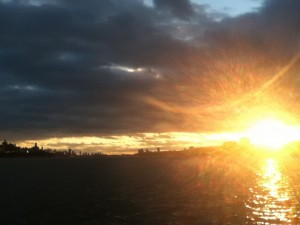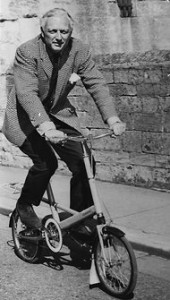Averting a Serious Bike Accident, by Luck
Had a helluva scare yesterday when I went out for a bike ride, one of my usual routes up Riverside Drive toward upper Manhattan. Shortly after setting off from my block, 102nd Street, at around 116th Street, I noticed a tugging against the front wheel of my Trek, a bike I bought June 5, 1982, as a present to myself shortly after saying goodbye to my longtime black Labrador, Noah, whom I’d buried the day before, June 4. I later read that this was the first year Trek began selling their bikes widely across the country, and it’s always been a tremendous ride for me. I thought the rubbing must have been the saddle bag I’ve long hung over my handlebars, so unhooked it, and wrapping it up with bungee cords around the trap above my rear wheel, I set off again. However, then I noticed my brake pads were rubbing on the front rim. I could scarcely pedal anymore, there was just too much resistance and drag. I turned around and began walking the bike to my bike shop, Champion Bicycles at 104th Street and Amsterdam Avenue.
When I got in to the shop, Jose, grown son of the owner Marcos, asked me what was going on. I told him of the drag on my front wheel. He immediately pointed to the front fork and said, “Your fork is broken.” I was shocked to notice what I had overlooked until just then, and stunned I hadn’t realized it myself. Jose added, “Good thing you quit riding. You could have eaten it.” I understood what he meant. If this failure had occurred while I was, say, riding as I often do, at 20 mph along the Riverside Drive viaduct at 125th Street, the whole bike could have crumpled to the street, and me with it. I could have been seriously hurt. Also, as the photos below show, bad as the fracture was, it did not snap completely in two.
Marcos said he can probably find a new fork for the Trek, though it’ll take a couple days. I asked him to thoroughly check the bike for any other signs of metal fatigue and stress. I’ve been riding the bike in NYC since moving here in 1985, and the potholes and broken pavement are often jarring, so I wonder if there might be other parts about to give way. I’ve never stinted from regularly maintaining it, also retrofitting it to make it better suited to use in the city. It started out as road bike, with drop handlebars and appropriate gearing, and I basically made it into a modified hybrid over the years. I’m very attached to the bike, for sentimental reasons and because the frame fits me so well. I hope it can be made road-worthy once again. If not, I’ll be soon shopping for a new ride. I left the bike behind and walked home in some shock. Here are two pictures I took before leaving the shop. 











